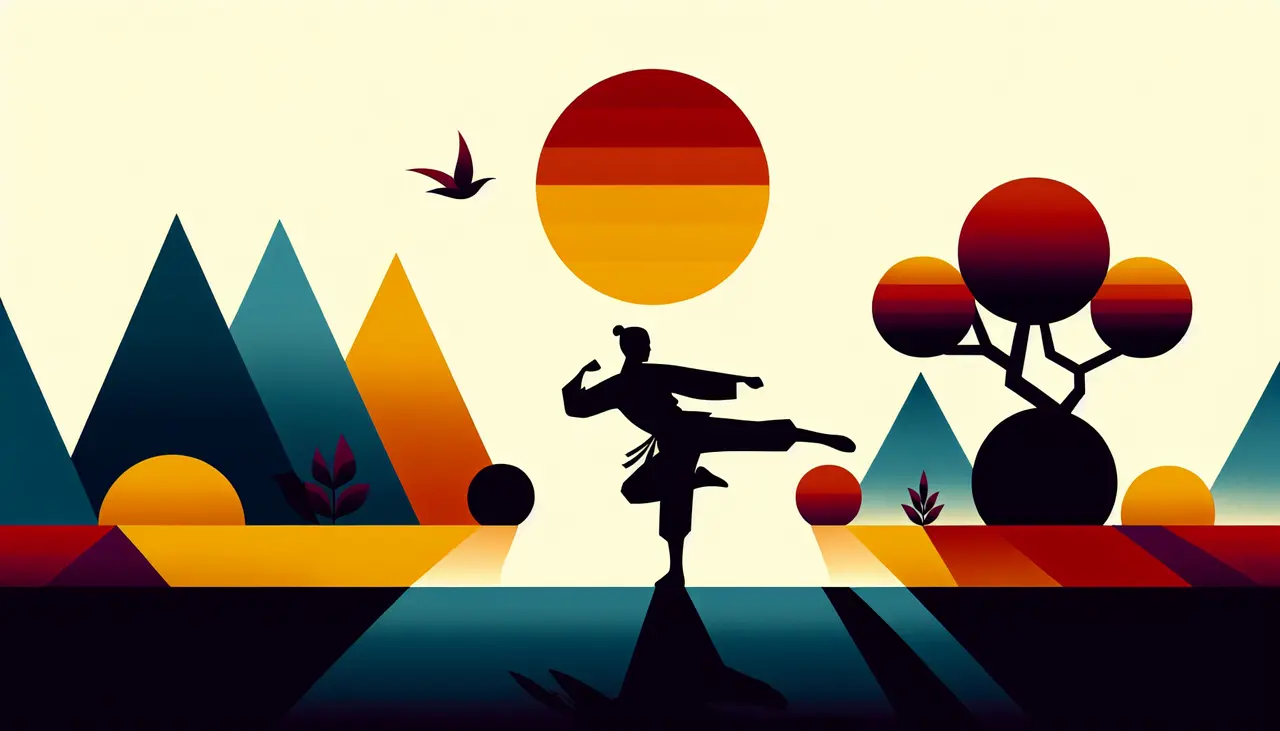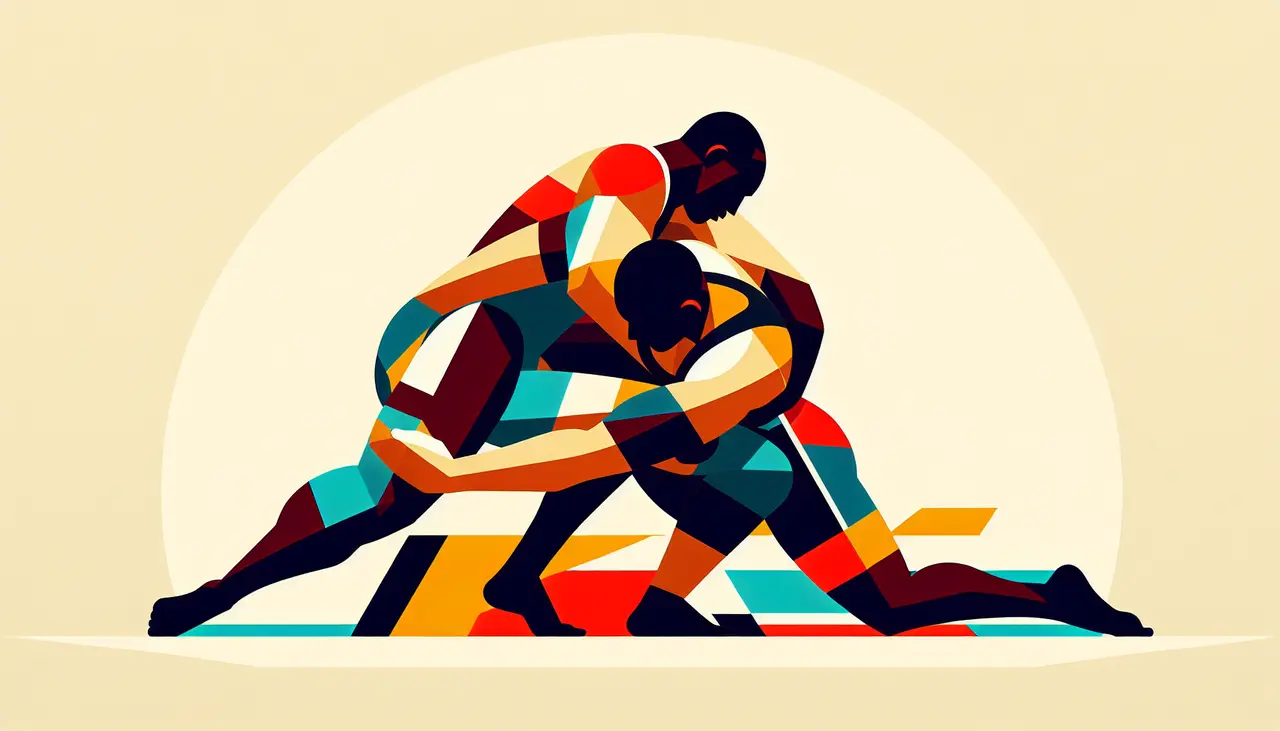Traveling and Training Worldwide
Martial arts are about more than just fighting; each style is a deep dive into the culture, discipline, and traditions of the place it comes from.
From the fierce punches of boxing at the time of the Marquess of Queensbury in England, to the graceful movements of capoeira in Brazil, each style offers a unique blend of physical training, mental strength, and spiritual growth.
Whether you’re looking to defend yourself, boost your fitness, or seek a deeper connection with your inner warrior, exploring martial arts from around the globe can be a transformative journey. You’ll not only learn how to throw a punch or a kick, but also gain insights into the philosophies and histories that have shaped these arts over centuries.
So, gear up as we take you through the world of martial arts, touching on styles both famous and lesser-known, and looking at the road ahead of traveling and training globally.
Exploring the Roots of Asian Martial Arts
The Asian martial arts tradition is so powerful and widespread, that the term “martial arts” today almost immediately conjures images of Asian fighting techniques.
Martial arts in Asia constitute a blend of discipline, philosophy, and centuries-old traditions. When we dive into the roots of Asian martial arts, we discover an incredible diversity, each with its unique origin story and purpose.
In Japan, disciplines like Karate and Judo are well known. Karate, which means “empty hand” in Japanese, emphasizes self-defense and striking techniques, while Judo focuses on grappling and was designed to promote physical, mental, and moral growth.
Nonetheless, these styles owe much of their origins to the tradition of Kung Fu in China – we can’t talk about martial arts without mentioning Kung Fu or Wushu. This ancient practice encompasses a variety of fighting styles, sometimes mimicking movements from animals or folklore. the practice of Kung Fu is deeply intertwined with Chinese philosophy, incorporating principles from China’s distinct amalgamation of Taoism, Buddhism, and other influences.
In Korea there’s Tae Kwon Do, known for its high-flying kicks and dynamic movements. This martial art is extremely popular today, and, like Judo, is a major Olympic sport.
Lastly, let’s not forget about Muay Thai from Thailand, often referred to as “The Art of Eight Limbs”. This brutal and intense sport uses the entire body as a weapon, developing a practitioner’s agility, strength, and endurance, and constitutes the foundation for the striking style seen in modern MMA.
For more about Asian martial arts and culture, try exploring around here.
The Lesser-Known Martial Arts Traditions of Europe
You might think of martial arts as being solely from Asia, but Europe has its own rich history of combat techniques. In Italy, Germany, and France, unique fighting styles arose which were deeply rooted in the continent’s medieval past.
For instance, the Italian martial art of Fior di Battaglia translates to “The Flower of Battle” and is all about mastering the sword, showcasing elegance and power. Similarly, Germany’s Kunst des Fechtens focuses on the longsword, emphasizing technique and precision to outmaneuver the opponent in a practical way.
Then there’s the French Savate, a kickboxing style that elegantly combines the use of both feet and hands, highlighting the importance of agility and control. Legend says that the martial art originated on French sailboats, and when one’s hands were occupied on the tumultuous seas, combat would be done with the feet.
For more about Western Europe, check around here.
Uncovering the African Contributions to Global Martial Arts
When you think of martial arts, your mind might immediately jump to Asia, with its rich traditions in disciplines like Karate, Taekwondo, and Kung Fu. But let’s take a journey westward to Africa, a continent that has significantly influenced martial arts globally, though its contributions often fly under the radar. Africa is home to various fighting styles, many of which predate those found in Asia.
One standout example is Capoeira, which, while popularized in Brazil, has African roots deeply embedded in the history of the Pan-African slave trade. This art form blends dance, acrobatics, and music to create a mesmerizing martial discipline. It was developed by African slaves in Brazil as a way to disguise their combat training as a traditional form of dance.
Then, there’s Dambe, a striking martial art from West Africa, originally practiced by the Hausa butchers. Dambe includes boxing techniques where one hand is the “spear” for striking while the other, wrapped in cloth, serves as the shield. This martial art is a test of strength, speed, and endurance, making it a fascinating study for anyone interested in the evolution of combat sports.
Another standout is Laamb, a traditional form of Senegalese wrestling, which is not just a sport but a crucial part of Senegalese culture that traces its roots back hundreds of years. It combines wrestling techniques with music and dance, showcasing the cultural richness of African martial traditions.
Unique Martial Arts Practices from Oceania
In Hawaii and New Zealand, you may encounter some martial arts you’ve never heard of.
Lua from Hawaii isn’t your typical combat sport. Lua is an ancient martial art focusing on bone-breaking and joint locks. Like jiujitsu, it’s about using joint locks and holds to neutralize opponents. The Hawaiians developed Lua for warfare, originally including lethal techniques for the battlefield.
Then there’s Mau Rakau from New Zealand, a practice deeply rooted in Maori culture. Mau Rakau is all about mastering weapons, specifically the Taiaha (a traditional Maori weapon that’s a combination of a spear and a club). Trainees learn not just to fight but to connect with their history and ancestors, making it a martial art with a strong spiritual component.
How to Find Authentic Martial Arts Training Abroad
Finding authentic martial arts training while abroad is more straightforward than you might think. First off, start by researching the country’s traditional martial arts. For example, if you’re heading to Japan, you’d likely look into Karate or Judo. Once you’ve got the art pinpointed, dive deep into online forums or local websites that specialize in that martial art. Martial arts enthusiasts are often happy to help newcomers, as long as you approach with an open mind and an “empty cup.”
Keep an eye out for classes that focus on tradition and technique over flashy moves or guaranteeing quick progress. True martial arts training is about discipline, history, and progression at your own pace. If it sounds too easy, it probably isn’t authentic. There is no good “Two-Year Black Belt Program.”
Lastly, trust your gut. Feeling a connection with the art and its teacher is crucial. If something feels off, keep looking. Authentic martial arts training abroad doesn’t just teach you moves; it immerses you in a cultural journey that deepens your understanding of both the martial art and yourself.
Integrating Martial Arts into Your Travels: Tips and Tricks
Adding martial arts training to your travel plans isn’t just for pros or those dreaming of becoming the next big martial artist. It’s for anyone looking to dive into a new culture, build confidence, or simply stay fit while exploring the world. Here’s how you can seamlessly combine travel with martial arts:
Choose a destination with a rich martial arts heritage – Countries like Japan, Brazil, and Thailand offer more than just scenic views; they’re cradles for disciplines like Judo, Brazilian Jiu-Jitsu, and Muay Thai. Picking a location known for its martial arts not only enriches your travel experience but ensures you get authentic training.
Research and plan ahead – Once you’ve chosen your destination, look up local dojos or training camps. Many training centers welcome travelers and might even provide short-term classes. Checking out reviews and reaching out for information can help you find the perfect fit.
Pack smart – While most training centers will have gear for you to use, it’s always a good idea to bring some essentials like a pair of gloves or your gi. This saves you from any rental fees and hygiene concerns. Plus, it means you’re ready to train at a moment’s notice.
Stay flexible but committed – Travel is unpredictable. You might find yourself wanting to explore a sight that only came up on your radar after arriving. It’s okay to adjust, but try to stick to your training sessions as best you can. Consistency is key in martial arts, and even a few sessions can make a difference.
Engage with the local martial arts community – Don’t just attend classes; immerse yourself. Talk to your instructors and fellow trainees. Many will be eager to share more about their culture and might even show you local spots you’d miss otherwise. This interaction deepens your travel experience and forges lasting friendships.
Integrating martial arts into your travels breathes new life into your journeys, pushing you beyond the usual tourist.
Still Need Help?
If you’re still not sure where to start, that’s completely fine.
Reach out to me on Instagram @this.is.adan, and I’d be happy to talk about your unique goals.
I also offer a coaching package called Digital Nomad 101 – Digital Nomad 101 is a 1-on-1 training call and presentation about the brass-tacks of digital nomad life. We’ll get your questions answered, and I’ll help you design your own first month abroad with my custom-planner.
Soon, you’ll be traveling the world and training in martial arts – I’ll tell you this, I’m enjoying it!
Your journey into the world of martial arts shouldn’t end with this article; if anything, it’s just the beginning!
Martial arts offer more than just fighting techniques; they’re a path to understanding culture, discipline, and yourself. Each country you visit, each style you explore, sheds light on a new aspect of martial arts, deepening your appreciation and skill. Remember, the cost of travel and training may vary, but the experience—immersed in authenticity and tradition—is priceless.
Keep an open mind, stay humble, and train hard.






